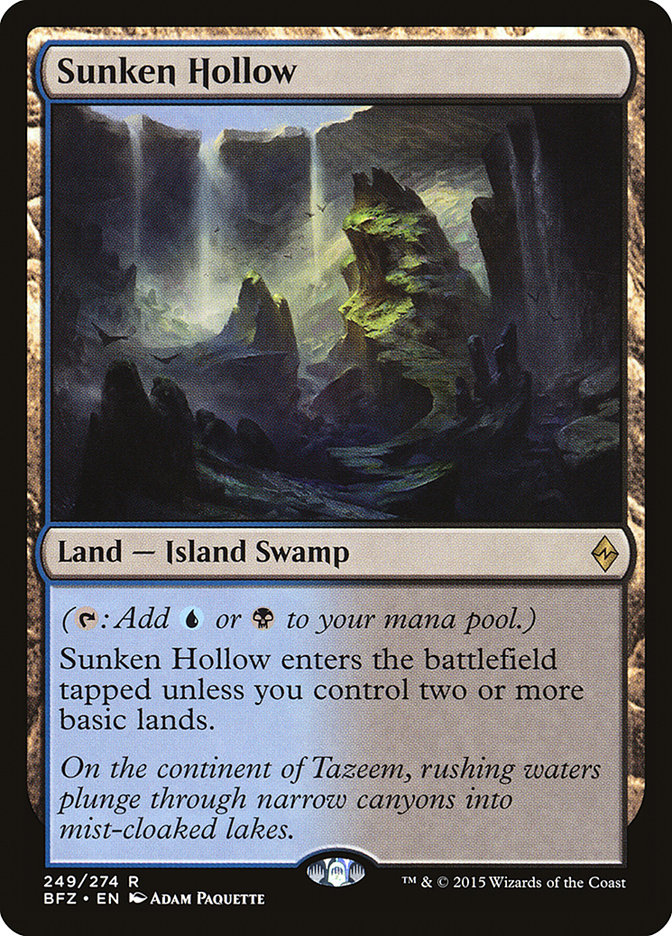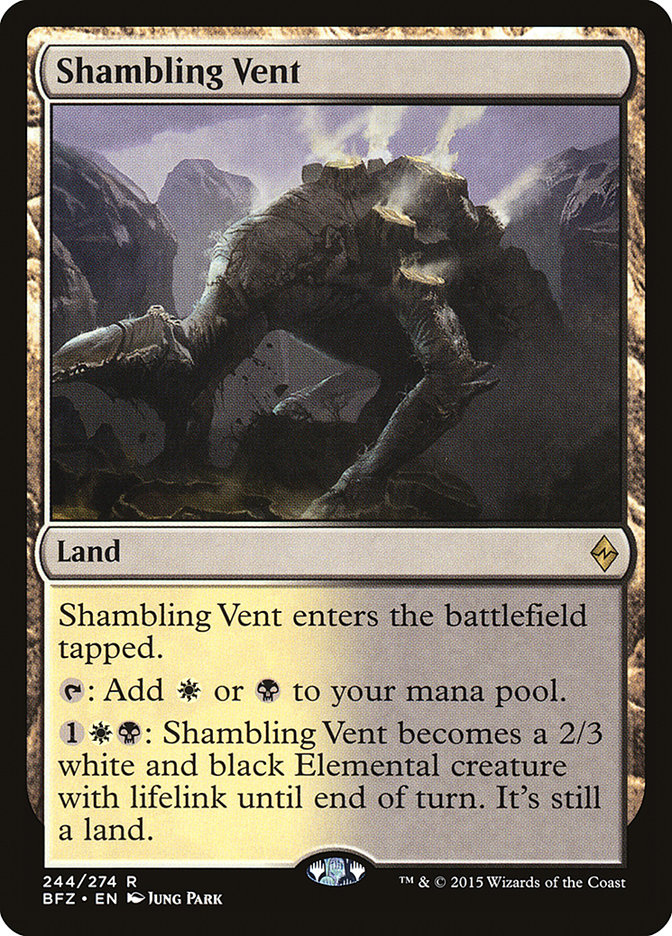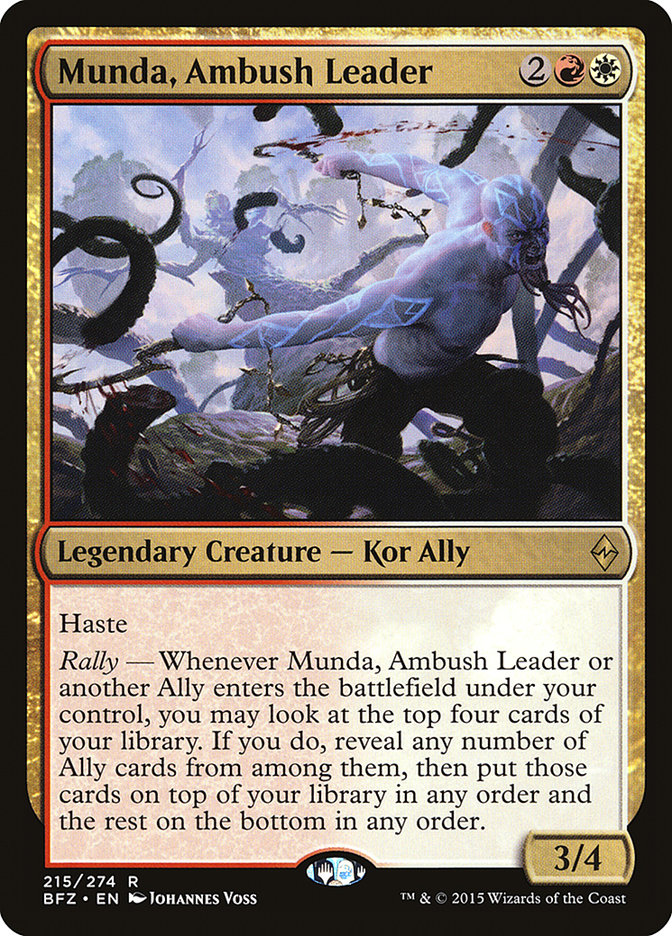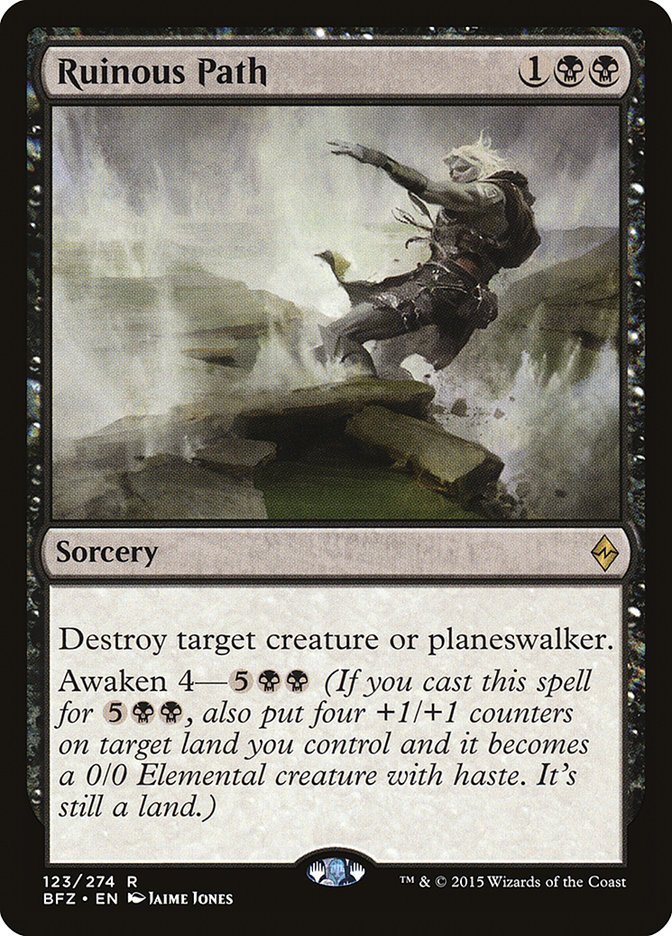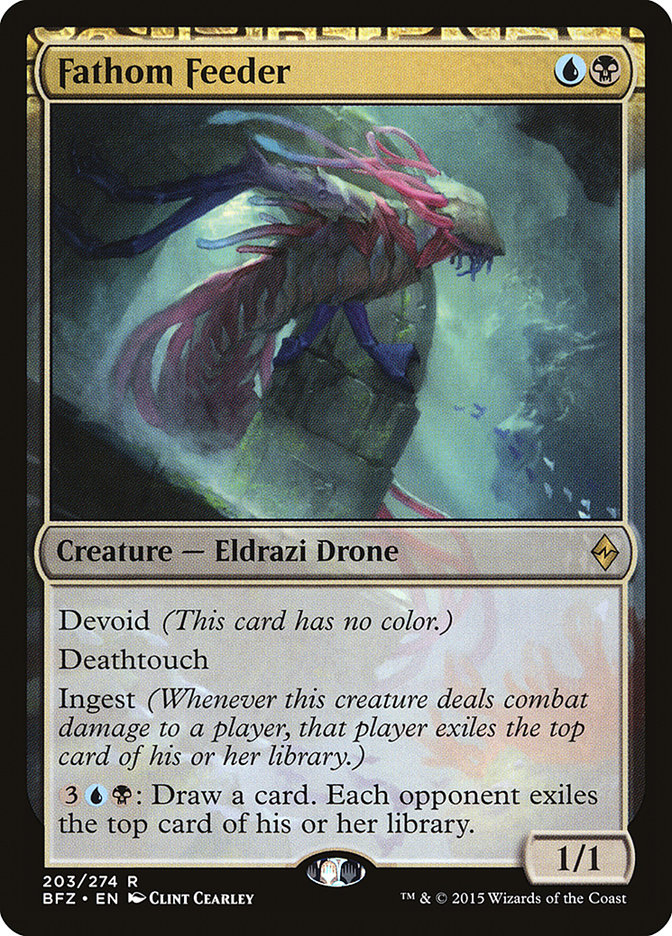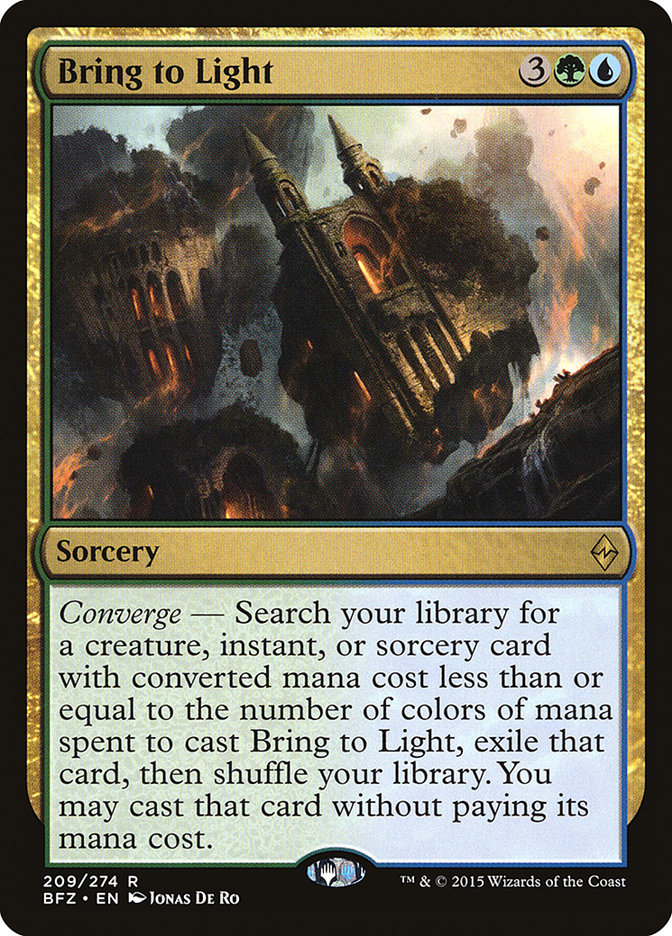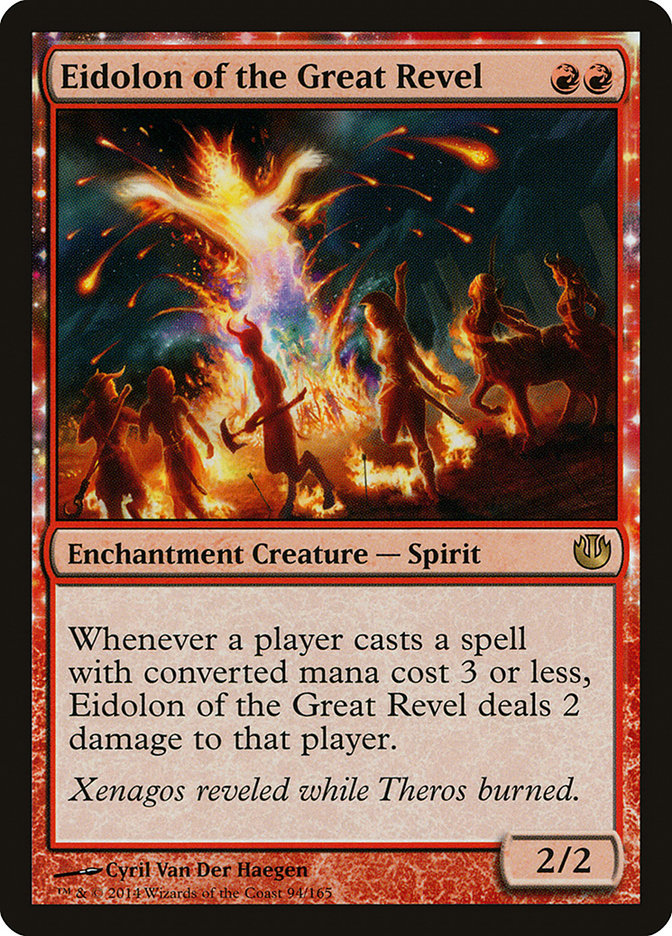[CEDitors Note: Hello everyone and welcome to another edition of Fact or Fiction! In this column, two Premium writers will answer five questions
provided by yours truly on Magic-related topics. At the end, you have the opportunity to vote on who won the head to head battle. This week, we have
Grand Prix Oklahoma City runner up and ninth place aficionado, Brian Braun-Duin, doing battle against Worlds competitor and North Dakota’s favorite
son, Brad Nelson!]
1. With Battle Lands, tri-lands, enemy creature-lands, painlands, fetchlands, and gain lands, Battle for Zendikar/Khans of Tarkir Standard will present
the most complicated manabases of all time.
Brian Braun-Duin – Fact: I’m sure it’s a puzzle that is solvable, but I’ve been having a really hard time piecing together manabases in
this format that can both effectively cast all my spells and also ensure I’m able to curve out in a normal fashion. Even beyond the veritable cornucopia of
color-producing lands, there are also a lot of really powerful colorless lands. Rogue’s Passage, Foundry of the Consuls, Sanctum of Ugin, Spawning Bed, and
the Blighted cycle are also lands with powerful effects that are begging to be slotted into decks.
There’s a huge tug-of-war between having perfect mana and having the ability to curve out properly. It’s possible to design three- and four-color decks
with phenomenal mana, but at what cost? It doesn’t really matter if your mana is perfect if you have to play too many taplands and end up dying before it’s
relevant. There’s also a lot of tension between getting value out of your lands and having the right colors of mana. Do you play Lumbering Falls or
Frontier Bivouac? Can you afford both? It’s hard to say and it’s been both a pleasure and a nightmare trying to build decks in this format.
Long story short, you know that manabases are going to be complex in this format when you’re designing Abzan decks that play Wooded Foothills over
Windswept Heath and it’s completely correct. How’s that for a head scratcher?
Brad Nelson – Fact: This question doesn’t even have all the lands that are potential options to be played in Standard. Never before have I
had conversations about “how” to build manabases before I even discuss which cards are worth casting. Options are always better than not, but right now
these questions have been overwhelming. Are four-color manabases actually better than three? Did Shards of Alara wedges become more consistent
than those of Khans of Tarkir block that have tri-lands? Are two-colored allied decks’ mana better or worse than playing a third color?
It’s times like these that I remember why I absolutely love Magic. I’ve been playing this game for almost half my life and professionally for six years,
yet I can’t confidently analyze the impact of the most “basic” resource in the game without extensive testing. I wish I could sit here and systematically
breakdown everything about the new manabases right here and now, but I am too busy being blown away that my four-color Knight of the White Orchid deck is
actually functioning. All I can say for now is that we will still be casting our spells even though the Temples consistency is a thing of the past. We will
miss you Theros, but we have outgrown you. It’s time for some complexity in our continents!
2. Battle for Zendikar will make Allies a playable tribe in Modern.
Brian Braun-Duin – Fiction: The most powerful ability that Allies have is that they snowball out of control with each other. Each Ally
grows the previous Ally and on and on up the chain. Eventually your Hada Freeblade is a 7/8 and your opponent is just dead.
None of these new Allies do that. They don’t get +1/+1 counters when Allies enter the battlefield. In a format like Modern, where removal spells are king,
it’s important for your tribal synergies to create this kind of snowball effect. It’s not merely enough for creatures to have synergy with each other. You
see this with Merfolk, where the Lords all pump each other and it can easily snowball out of control. You also see this with Elves, where each Elf helps
create even more mana, allowing the deck to do even more degenerate things.
It’s possible that a few of these new Allies are good enough to slot into the Modern Allies deck, but it’s unlikely that it’ll be enough to push a tier 2-3
deck into being a tournament viable strategy. If anything, the card that would accomplish that would be Unified Front, but it’s awkward how poorly that
card plays with Cavern of Souls and Ally Encampment.
Brad Nelson – Fiction. Ari Lax might be a Pro Tour champion, but don’t let him fool you into believing he knows what decks to play. Ari
has been spouting off so much about Allies in Modern for a couple weeks that I had to un-follow him on social media. The sad thing is that this story is
trending. Left to his own devices, Ari will be found playing the worst decks in each format due to his inability to feel things. The man behind the myth is
actually none other than Steve Rubin.
Steve Rubin built not only the winning decklist for Pro Tour Khans of Tarkir last season but also tuned the list Seth Manfield used to crush Worlds a few
short weeks ago. In preparation for this Fact or Fiction, I flew to Pittsburgh, Pennsylvania to have a sit down with the Dark Horse of Magic to find out if
Ari had in fact jumped off the deep end yet again with myths of Allies resurgence or if someone was masterfully pulling his strings.
Steve, being the kind and heart-warming individual that he is, greeted me at the airport upon my arrival into Pittsburgh. He knew the importance and strict
timeline I was under for this interview so he had already reserved us a table at Isabela on Grandview. I didn’t know of the restaurant, but Mr. Rubin
assured me that I would enjoy my time.
While en route, I felt very casual in the presence of Steve, but within seconds it all dissipated upon arrival. Immediately upon walking up we were greeted
by not only multiple members of the wonderful staff at Isabela on Grandview but also the manager himself. Dave, the general manager, had assured us that no
shortcuts were spared when they heard that the original Rhino was going to be dining with them that evening. I was blown away by not only the respect every
employee gave Mr. Rubin but the humble demeanor he had.
After a delicious first course I found it appropriate to get down to business. I pulled out the notebook where I I jotted down as many potential questions
as I could think of while flying to Pittsburgh and was eager to see what “Tha Rueb’s” had to say about Modern. “Shall we get down to the brass tacks of why
I am here?” I asked Steve while he sipped on his Chateau Marguax. He nodded in agreement. I cleared my throat for what might be the most important question
I asked the most important man I’ve met to date.
“Is Battle for Zendikar the push Allies needed to compete in Modern?”
He paused for a second as he let his wine aerate. His brow furrowed as he was obviously deep in thought.
“No.”
At that moment I could tell that everyone in the restaurant had been listening in as if the next words out of Mr. Rubin’s mouth may have been the last. A
pin drop could have been heard if it wasn’t for the waiter who lost control of his tray along with his emotions. We all had to take a moment to internalize
what we just heard, but Mr. Rubin started speaking once more. “The only deck playable in Modern is Jund,” he said confidently.
He then stood up as if he was going to excuse himself to the bathroom. Instead, he leaned in towards me as if the next words out of his mouth were for me
and for me only. I buckled in anticipation of what he would next say to me.
“If you ever ask me another stupid question like that again, it will be your last.”
He flipped the tabled over and before I could pick up the pieces of my broken dishes and dreams he was gone. I flew home that evening not knowing if I met
a man, a myth, or a monster. All I knew was that I saw life a little bit differently.
I later found out after my trip that Isabela on Grandview had closed down weeks prior to our dinner there and could not find a single person who could
corroborate my side of the story. The only thing I was able to dredge up was rumors that the restaurant went under shortly after the owner was overheard
insulting the merits of Dark Confidant. Mr. Rubin was unavailable for further questioning.
I will remember that night for the rest of my life.
3. Though there are a lot of impressive cards, Gideon, Ally of Zendikar is the best card in Battle For Zendikar.
Brian Braun-Duin – Fact: There are a lot of interesting cards in the set. Battle for Zendikar feels a lot like Magic Origins did when I first saw it. There are a lot of cards that do interesting things, and it’s not immediately and obviously apparent
whether those things are good. Jace, Vryn’s Prodigy was scoffed at by most Magic players when it was first revealed, but now it’s seeing Modern and Legacy
play as well as being a format powerhouse in Standard. Most people ended up being wrong.
I think Battle for Zendikar is similar. A lot of people are complaining about the set, but I have a feeling they will all be eating crow on that
one eventually. One thing that I don’t think they are wrong about, however, is the idea that Gideon is top of the food chain. I’ve been testing all kinds
of decks with the new Gideon and, to be quite frank, he is good in every single one of them.
Gideon just does everything. He creates a constant stream of pressure and card advantage by churning out tokens, he can close a game very quickly by
attacking for five, and at worst he’s a Glorious Anthem that can’t be interacted with in any way. I think Gideon will end up being one of the most
skill-testing cards of the new environment, but I also think he’s going to be the best. Gideon is not only powerful on his own but he also makes a lot of
other cards better because he forces your opponent to react to him immediately. They can’t ignore Gideon because of how quickly he can take over a game,
and that kind of forced pressure creates an enormous tempo advantage that can be exploited.
Brad Nelson – Fact: Gideon, Ally of Zendikar is absolutely busted! White planeswalkers are historically the best due to how shafted white
gets in the color pie. The color has bad removal, weak creatures, and even more embarrassing spells. It really only survives on the back of good
planeswalkers. Usually this won’t make white a busted color, but the Khans of Tarkir wedges of Abzan and Jeskai are both primed for exploiting
every ability on this mythic rare.
Gideon, Ally of Zendikar is the Xenagos, the Reveler that Abzan always wanted. Sorin, Solemn Visitor was close, but the added loyalty helps keep Gideon,
Ally of Zendikar alive long enough to get more value out of it. If they invest their entire turn into killing it, the Ally 2/2 will most likely be alive to
help trigger raid for Wingmate Roc. If Gideon and his token survive the turn cycle unscathed, the 3/4 fliers might find themselves getting protection from
Languish with a sacrificial Gideon. This interaction alone will bring heartache to Standard for months to come.
I expect Gideon, Ally of Zendikar to be the most impactful card from this format and have already preordered a set in anticipation for a significant price
jump after the Open Series in Indianapolis in two weeks.
4. Of the new mechanics and keywords in Battle for Zendikar (Devoid, Ingest, Awaken, Rally, Converge, Landfall), Awaken is the best for Constructed.
Brian Braun-Duin – Fiction: My experience in testing this format so far is that you don’t really have a lot of time to durdle around.
Awaken is great in games that go long and where raw card advantage matters. I’m not sure those are the kinds of games we are going to be playing. I think a
lot of games are going to be basically decided one way or another within the first 5-6 turns of the game, long before Awaken even becomes a factor.
I think Awaken is actually the third best mechanic in the set. I think both Landfall and Converge are better than it, and both of those mechanics also play
nicely with each other. Landfall encourages playing more lands–fetchlands especially–which can enable three- and four-color manabases, which in turn help
fuel Converge. I think manabases with a lot of fetchlands, Battle lands, and basic lands are going to be quite popular, and I suspect a number of Landfall
and Converge cards are going to find themselves easily slotting into those decks as a result.
Brad Nelson – Fact: Awaken will be the most impactful for Standard for many reasons. The most basic reason is the fact that Battle for Zendikar feels a little weak due to following up the powerful Khans of Tarkir block. It’s not like these new
abilities and keywords are bad, but they are slightly underpowered compared to Khans of Tarkir. They also all work around synergy, which might not
be enough when people are still casting Siege Rhinos. The only reason why Awaken will shine is the fact that Standard Magic is always in need of mana sinks
and flood protection.
The Awaken mechanic is a perfect way for decks to play enough lands to consistently play out the early and mid-game but not feel flooded when games go
long. We will see these cards shine bright in the coming months of attrition-based battles between Den Protector, Dig Through Time, and Greenwarden of
Murasa. Lands will be awakened and lives will be lost.
5. Theros/Khans of Tarkir Standard is the best Standard format of all time.
Brian Braun-Duin – Fiction: I think the format was healthy, but I personally didn’t find it fun. It was a good format, but I didn’t like
it. I know that sounds like a weird thing to say, but sometimes you can appreciate when something is good even if it doesn’t appeal to you personally. I
will say that I think Theros/Khans of Tarkir Standard was quite a bit better than its predecessor. Mono-Black and Mono-Blue Devotion ruling Standard was a
miserable format, and this was a far cry from that.
But if we want to talk best Standard formats of all time, I think we have to dial it back to Innistrad/Return to Ravnica Standard. Now that was a
Standard format. There were a ton of viable decks in that format, and a lot of them were really interesting, like the various Aristocrats versions. You
could beat down with R/G Aggro or Naya Blitz or even Bant Hexproof. You could play control with Jeskai Flash decks or Bant Control. You could play midrange
with Jund. You could play aggressive and controlling engine decks like Abzan Reanimator. You could even play combo decks like Peddle to the Meddle or Angel
of Glory’s Rise Reanimator. There was something for everyone in that format, and it goes down for me as simply the best format of all time.
Innistrad/Return to Ravnica
Standard: may you Rest in Peace. (Except everyone who played that card was a big jerk.)
Brad Nelson – Fact: I’ve already written an article about why I think this to be the case, so I am glad I get another chance to write
about what I love. Theros/Khans of Tarkir Standard was so great because of how deep the format got. Yes the same cards kept doing well, and yes it
was boring to watch at times, but the true testament of its greatness was playing it. The games never were boring and always had this underlining level of
stress that came with them. It was impossible to have successful strategies that didn’t respect making significant changes when on the play or the draw,
and anyone that argued differently lost. Those who could adapt flourished, while those stuck in their stubbornness ways fell.
I have never felt that the effort I put in to changing my lists week to week and finding new strategies to ever be as rewarded than when I played this
Standard format. I even drove a couple hours this past weekend to play in a Standard Win-a-Mox tournament even though I had a local Modern Super IQ,
because I wanted one last chance to play the format I fell in love with. I’m hoping that Battle for Zendikar will keep my fire burning as
bright as it was last year, but I don’t think any Standard format will ever hold a candle to Theros and Khans of Tarkir.

